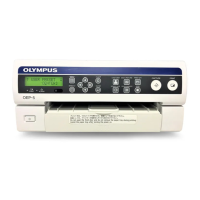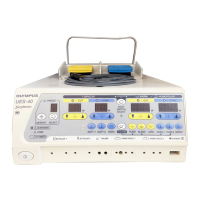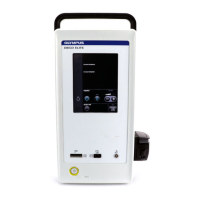58
Chapter 6 Care, Storage and Disposal
ELECTROSURGICAL UNIT PSD-30
Chapter 6 Care, Storage and Disposal
After each use, perform the following cleaning procedures immediately. If
cleaning is delayed, debris encrustation may become a source of infection.
Encrustation may also result in electrosurgical unit malfunction.
For maintenance and storage of other optional items than those described
below, refer to the respective instruction manuals.
6.1 Care
• After cleaning the electrosurgical unit, dry it thoroughly before
using it again. If it is used while still wet, there is the risk of an
electric shock.
• Patient debris and reprocessing chemicals are hazardous.
Wear personal protective equipment to guard against
dangerous chemicals and infectious material. During
cleaning and disinfection, always wear appropriate personal
protective equipment, such as eye wear, face mask,
moisture-resistant clothing and chemical-resistant waterproof
gloves that fit properly and long enough so that your skin is
not exposed. Always remove contaminated protective
clothing before leaving the reprocessing area.
• Never immerse the electrosurgical unit in water, clean or
disinfect by immersion, gas sterilization or autoclaving. It may
cause equipment damage.
• Do not clean the connectors or the AC power inlet. Cleaning
them can deform or corrode the contacts, which could
damage the electrosurgical unit.
• Do not wipe the external surface with hard or abrasive wiping
material. The surface will be scratched.
1. Turn the electrosurgical unit OFF and disconnect the power cord from the
receptacle (wall mains outlet).
2. If the equipment is soiled with blood or other potentially infectious materials,
first wipe off all gross debris using neutral detergent, then wipe its surface
with a lint-free cloth moistened with a surface disinfectant.

